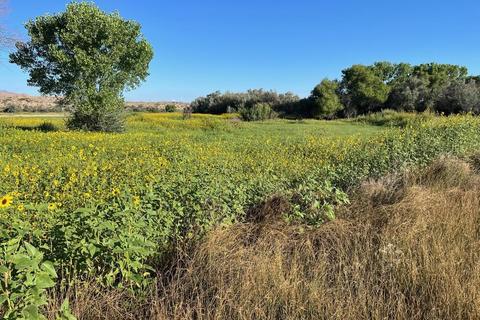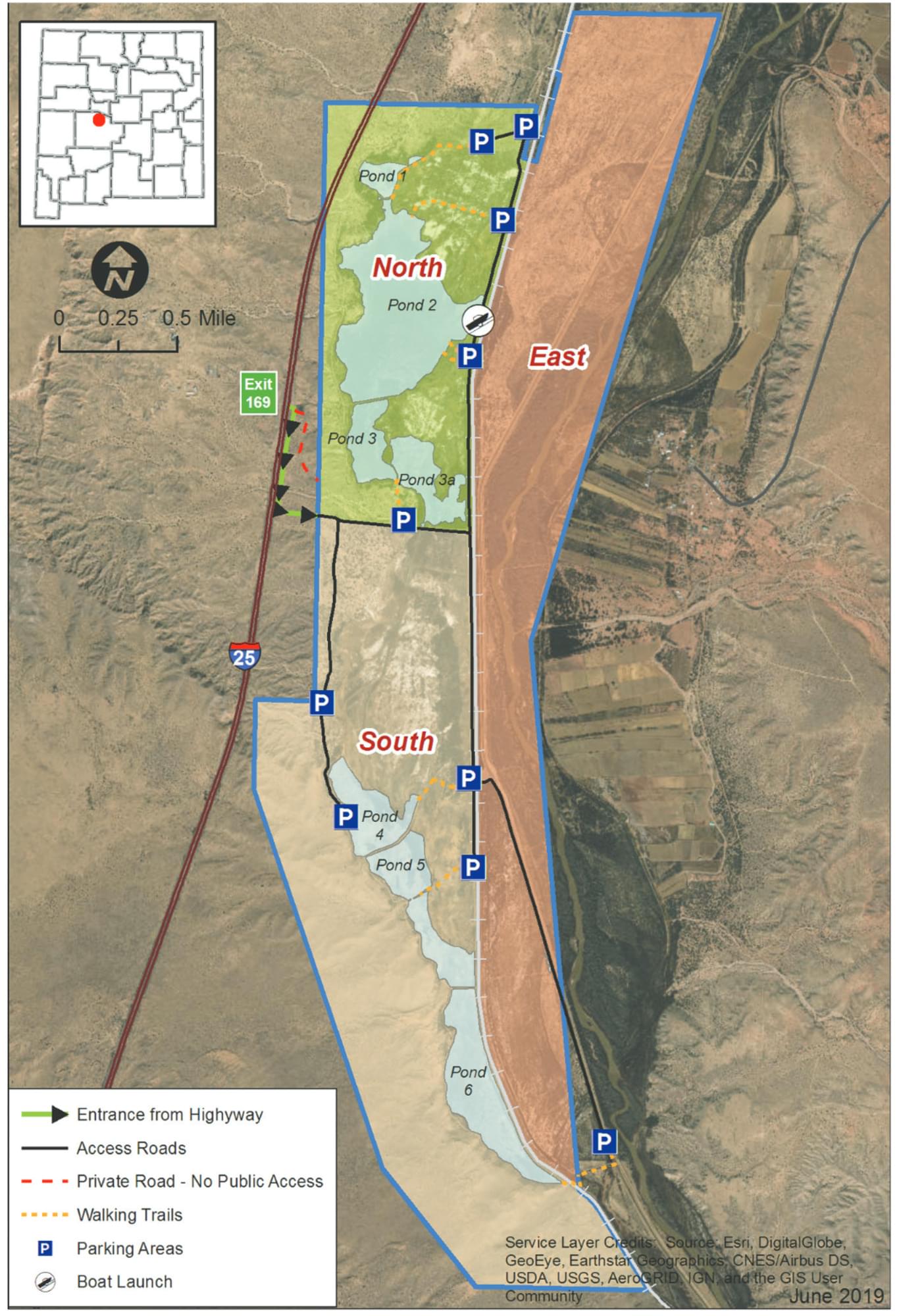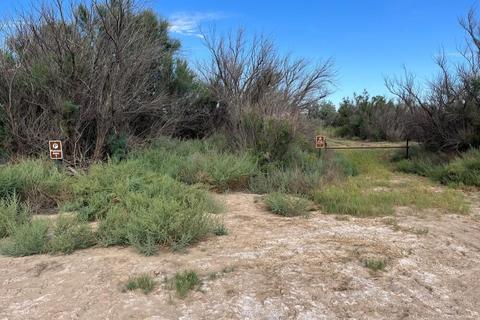
La Joya Wildlife Management Area
La Joya Wildlife Management Area
La Joya, New Mexico 87028
La Joya Wildlife Management Area information and mapTips for Birding
When submitting eBird observations at La Joya Wildlife Management Area, it is most helpful to start a new checklist for each hotspot in the wildlife management area. Use the general hotspot when you have a checklist that includes multiple locations or if no other hotspot or personal location is appropriate for your sightings.
Use the La Joya Wildlife Management Area (WMA) hotspot to report your La Joya Wildlife Management Area observations if you are not going to be specific about where in the WMA you encountered birds, especially if you observed them north of the main east-west road into the Area or east of the railroad tracks. Although this (the oldest) hotspot’s map “pin” is located in the northern portion of the WMA, and there does exist another, newer hotspot in the southern portion of the WMA (and west of the railroad tracks), the original hotspot’s eBird species frequency bar charts include observations for the entire WMA.
Birders should be prepared for the identification challenges presented by the simultaneous presence of Chihuahuan and Common Raven during winter and spring, as well as by four swallow species during April and May.
Except during the driest months, mosquito repellent is a must for comfortably birding this hotspot.
For details on birding the South Hunt Unit, see this site’s entry for the WMA South Walking Trail.
Birds of Interest
Yellow-billed Cuckoo (July-August, infrequent)
Common and Leser Nighthawk (May-July)
Broad-tailed Hummingbird (May and September)
Ferruginous Hawk (November-March, infrequent)
Olive-sided Flycatcher (August-September)
Willow Flycatcher (June-September, infrequent)
Bell’s Vireo (April-September)
Woodhouse’s Scrub-Jay (November-January)
Phainopepla (May-July)
Virginia’s Warbler (May and September, occasional);
About this Location
La Joya Wildlife Area, 3,405 acres, is located about 20 miles north of Socorro. La Joya Wildlife Area was purchased in various parcels through 1940 to provide habitat for waterfowl, sandhill cranes, shorebirds, and songbirds. The La Joya Wildlife Area contains ponds, canals, drains, and crop fields along and adjacent to the Rio Grande.
Wildlife watchers may see various waterfowl, songbirds, and quail. Good binoculars are important. The best time to view wildlife is at dawn or dusk. Access is allowed from March 15 to August 31.
La Joya is closed to wildlife viewing, photographing, hiking, bicycling, and horseback riding from September 1 to March 14.
Notable Trails
The AllTrails website has a description and map of a hike at La Joya Wildlife Area.
Content from La Joya Wildlife Management Area information and map and John Montgomery
Last updated March 22, 2024

